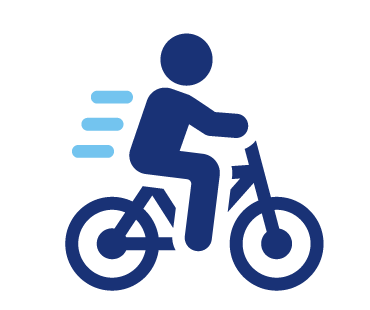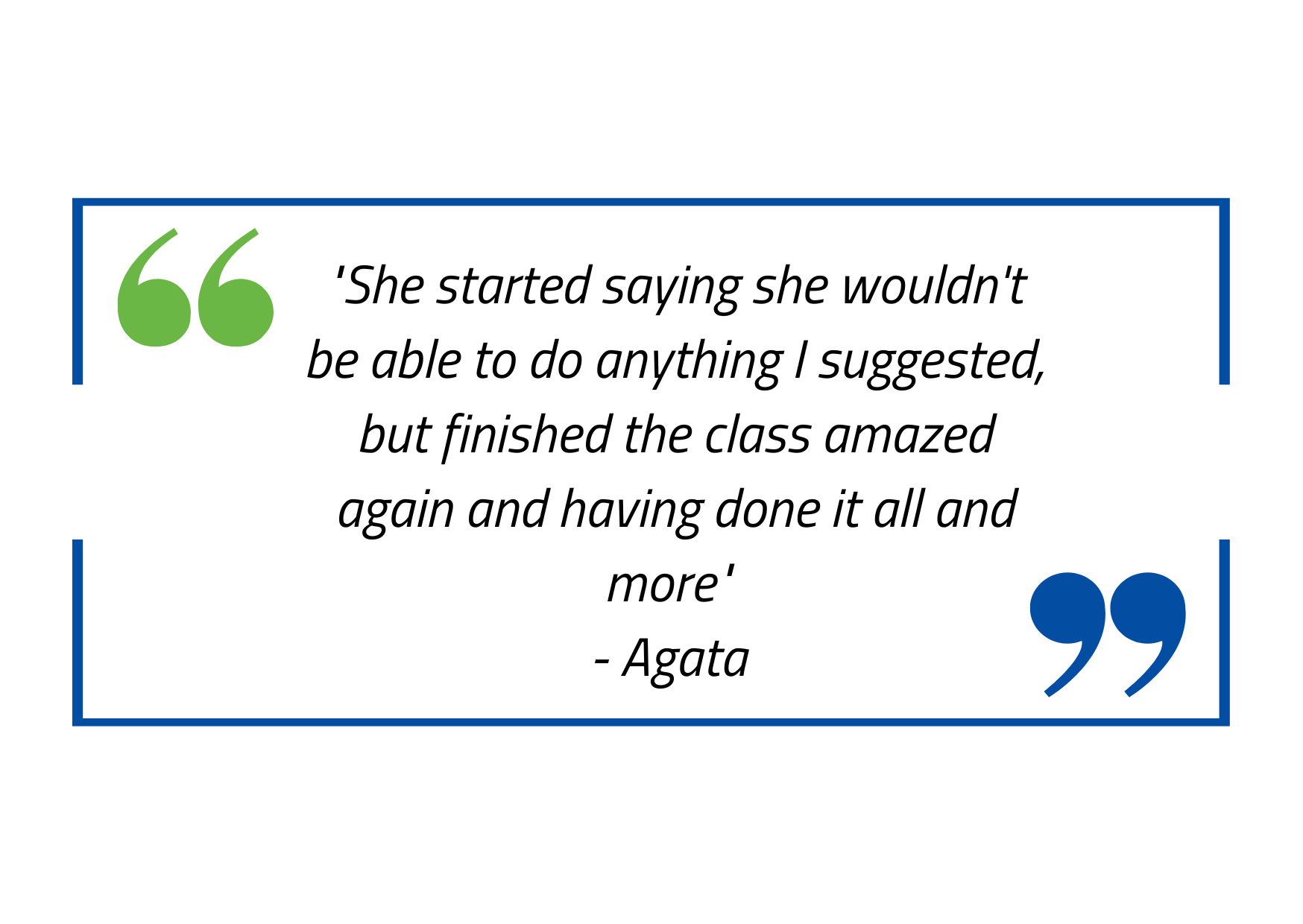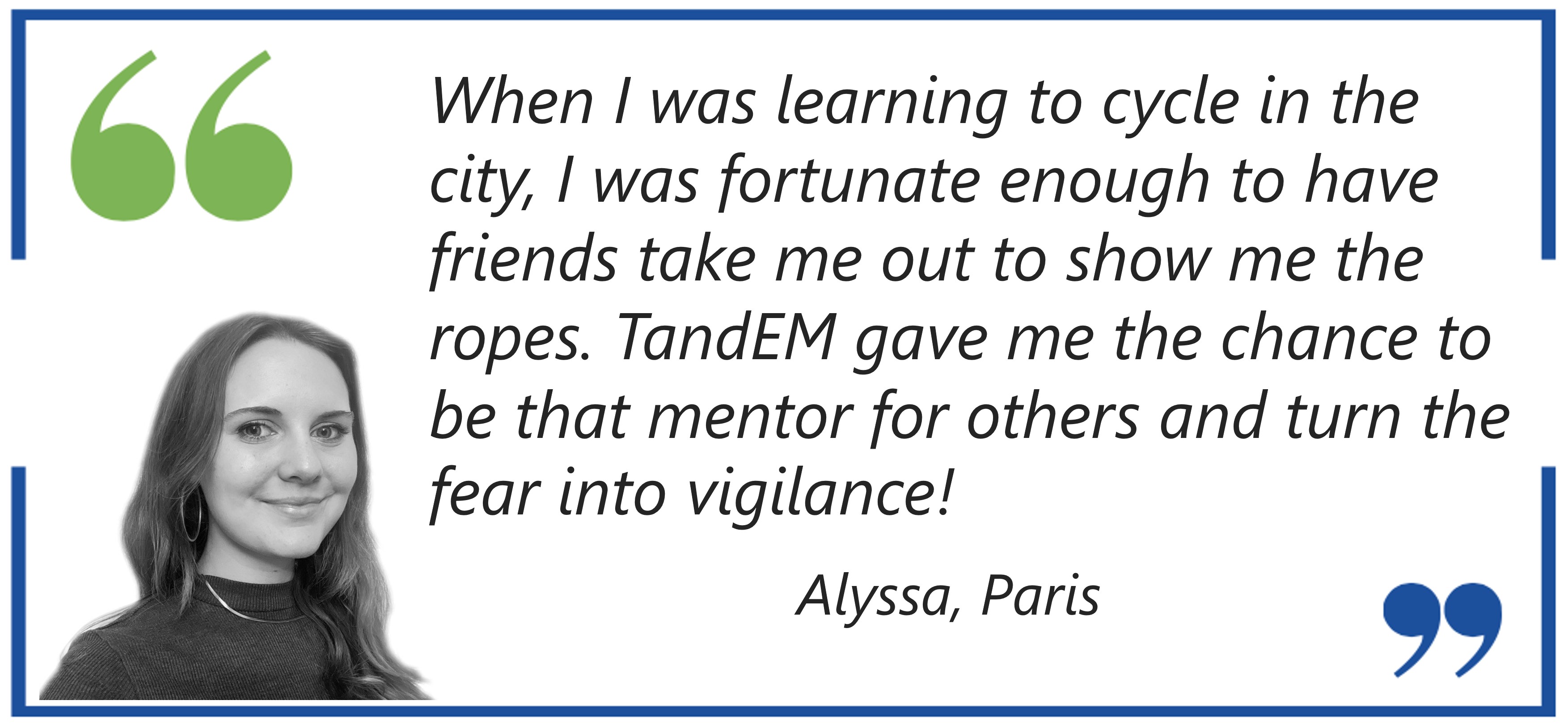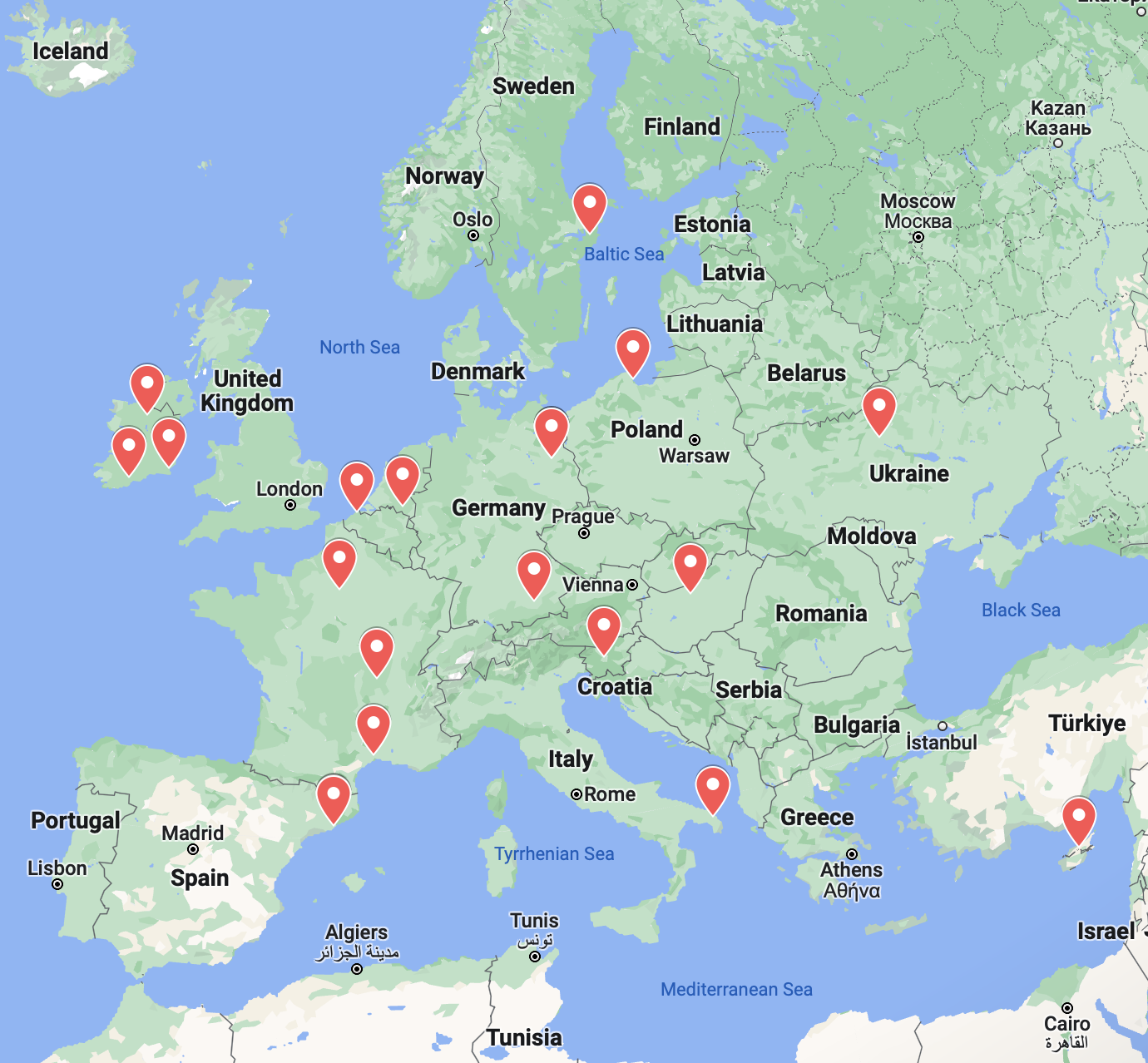TandEM Women in Cycling
Cycling Training and Empowerment for Women by Women
Past editions
We have already led two editions of the programme and it has been a real success so far.
After receiving both theoretical and practical training on how to teach someone to bicycle, the participants were able to start their own cycling training sessions in their respective cities all over Europe, with inspiring results!
 You can see photos from past editions in the gallery!
You can see photos from past editions in the gallery!
In 2022, 10 participants were selected for the programme. Afterwards, they trained 45 women to boost their cycling skills.
For our second edition in 2023, 12 participants were selected to be in the program. In 11 cities, more than 60 women participated in the local trainings, gaining confidence and skills to cycle.
Each participant had their own vision of what they want to share and teach within their community. For example, they focused on training people in different groups: many worked with people who had recently moved to the city or country, while others focused on students, mothers and families. The participants also taught women at different levels – some focused on learners who had never cycled before, while others worked with learners who already knew the basics of cycling and wanted to gain confidence cycling in urban environments or experimenting with new equipment like child seats, e-bikes and cargo bicycles.
The participants formed part of an active network who engaged and supported each other throughout the process. Even though they are in different cities, there were many commonalities in their experiences. They keep learning from each other and we learn from them as well! Keep reading for some important takeaways from their training sessions.
Read Alyssa's experience running her TandEM group in Paris in her own words in this article she wrote for ZAG Daily.
What can you do?
Even if you haven’t participated in the TandEM programme, there are many ways to get involved.
You can see if your city or local cycling organisation already offers cycling lessons. Oftentimes, they are looking for more volunteers who are interested in getting involved.
There are also many resources online and we can also share some information if you get in touch. If you feel like teaching, read our tips below!
- Get familiar with the bike: how it works, what the different parts are called, how to walk with it, how to sit on the saddle...
- Learn how to balance on a bicycle – the Draisienne method, where the pedals are removed from the bicycle, is often used for this purpose. A large smooth surface with a slight slope is ideal for this exercise. Why? Going down the slope can give them speed, which makes balancing easier! Practice making basic maneuvers such as turning, slowly and suddenly braking, cycling in a straight line, looking over the shoulder, using hand signals – an obstacle or parkour course can be helpful to recreate different scenarios for the participants to navigate.
- Make short practice rides in parks or on quiet streets. Stop at different scenarios to explain them in more detail – for instance, why someone had right of way at a certain intersection.
- Work up to more complicated intersections or busier roads, always starting with safe and protected bicycle lanes if possible. Debrief afterwards to answer questions and highlight any areas for continued practice.
- Start small – work with 1-4 people in a safe environment, ideally a large surface with a slight slope. If you’re going to take people for a group ride, it’s always best to have one guide in the front and one guide in the back of the group.
- Don’t forget to teach the rules of the road – road signs, local cycling regulations and knowing who has right of way at an intersection are important starting points.
One of our participants used some toys and objects to show how to navigate a roundabout.
- Practice makes perfect – some things just take time. Most adults, even if they’ve never cycled before, will start independently pedaling after 2-3 practice sessions. And there’s no greater feeling than seeing the smile on people’s faces when they realise they’re bicycling on their own for the first time. Don’t forget: learning how to pedal is just the first step – building confidence to cycle is about getting practice through group rides and experiencing different scenarios.
- Different training is needed for different target audiences and purposes. Some people know how to cycle already, but want to learn how to bicycle with their children or pets, use an electric bicycle, or ride with a cargo bicycle. Talk to them about their goals and needs to see how you can best help.
- Don’t forget to teach the ‘other things’ - knowing how to properly lock a bicycle, put a chain back on a bicycle, adjust the gears and saddle height, carry groceries using side paniers, and even how to map safe cycling routes will help people gain confidence to cycle more on their own.
- And most important: don’t forget to have fun! Cycling is a great way to meet others and to build community.

Need some more advice or have specific questions? The below map shows where Tandem Women in Cycling participants have led training sessions. Many of them would be happy to chat and share their experience. Email us at [email protected] if you’d like to get in touch.

Participant map: where have TandEM courses been organised?
EIT Urban Mobility’s online courses are also a great place for professional resources and information on how to design and plan for a cycling city.
Here are a few examples of courses you can try to learn and discover more about urban mobility:
- User experience for inclusive cycling in cities
- A brief introduction to micromobility
- Understanding cycling in Europe
- Multimodal transport: why a diversity of modes for a healthy city?
Follow this link for more information: https://urbanmobilitycourses.eu/





